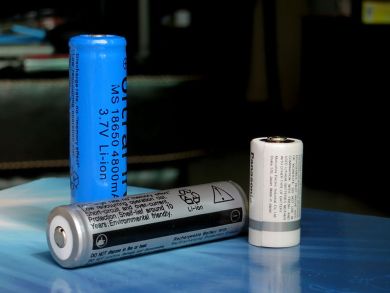Why are Li Ion Batteries so Popular?
Why use Li Ion cells?
Li Ion batteries have become so commonplace in every electronic gadget in our lives that we as consumers take it for granted that such an easy-charging and easy to use battery exists in every part of our lives.
Most electric scooters have naturally adopted such batteries as their main power source and the best of them always come packaged with a korean manufactured cell (Samsung, LG etc) with a reliable Battery Management System (BMS).
Advantages
- Li Ion contains one of the highest energy density compared to other battery technologies including alkaline, Nickel Cadmium, Lead Acid, Li Fe etc.
- Highest no. of charge cycles hence longest life span
- No memory effect so you do not have to fully discharge the battery before charging it up.
- Low natural discharge rate. The Li Ion battery would not quickly lose its charge naturally during long periods of non usage.
Disadvantages
- Does not perform well under high temperature conditions. High heat causes the Li Ion battery to lose its charge.
- Single cell failure causes a chain reaction which renders the whole battery pack useless.
- Thermal runaway conditions exist where a single cell heating up will cause the neighboring cells will heat up hence lose their charge quicker.
However, with proper protection circuity and mechanical protection, the disadvantages of using Li Ion cells can be mitigated. Since the benefits outweigh the risks, Li Ion batteries have become the default power source for long lasting electronic products.
All you Need to Know About Li Ion Battery Packs
Li Ion Cells

The battery pack is made up of several Li Ion cells (shown above) configured in series and parallel.
Each cell is between 2.3-4.2V with nominal operating voltage of 3.6V and each cell can hold a capacity of between 2200Ah to 4800mAh.
For an Inokim Quick Hero battery that is 9Ah 36V, can you guess how many cells are there?
| 3.6V/
2.2Ah |
3.6V | 3.6V | 3.6V | 3.6V | 3.6V | 3.6V | 3.6V | 3.6V | 3.6V |
| 2.2Ah | |||||||||
| 2.2Ah | |||||||||
| 2.2Ah |
There are 40 cells in total. Each cell has a voltage of 3.6V so there will be a series of 10 cells to make up the nominal operating voltage of 36V. And each cell has a capacity of 2.2Ah so there will be 4 cells in parallel to make up the 8.8Ah (rounded off to 9Ah).
Battery Management System (BMS)

This small smart modules help regulate the discharge and charging of the individual Li Ion cells to prevent overcharging and over discharging of the battery. It helps to balance out the charges of the whole battery pack too to ensure that the cells are all charged to an even voltage.
The BMS also provides auto cutoff protection once the charging limit of 4.2V/cell has been reached protecting the cells from being damaged.
With proper protection circuitry, the BMS will prolong the life of your Li Ion battery pack and hence the overall life of your electric scooter. However, there are some things you as a user can watch out for to help prolong your battery life.
How to take care of your Li-Ion Battery
With the battery often the most expensive component in the make up of an electric scooter, you as the user should learn how to take care of it. Here are some tips on how to take care of your escooter battery so that its lifespan can be preserved.
- Do not store your electric scooter in high temperature places above 30 deg C. That includes not storing in the trunk of your car if you park your car in an open air parking lot.
- Do not charge your electric scooter to full. A lithium-ion cell charged to 4.20V (max voltage) typically delivers 300–500 cycles of life. At 4.0V, the cell should deliver 1,200–2,000 and at 3.90V should provide 2,400–4,000 cycles. Optimal charge voltage is 3.92V.
- If and when you are going on a long holiday or plan to leave the electric scooter for long periods of non usage, then leave the battery at 30-40%, NOT at anything less than 10%.
If you experience any battery issues with your escooter, you can call in the professionals in electric scooter services.
